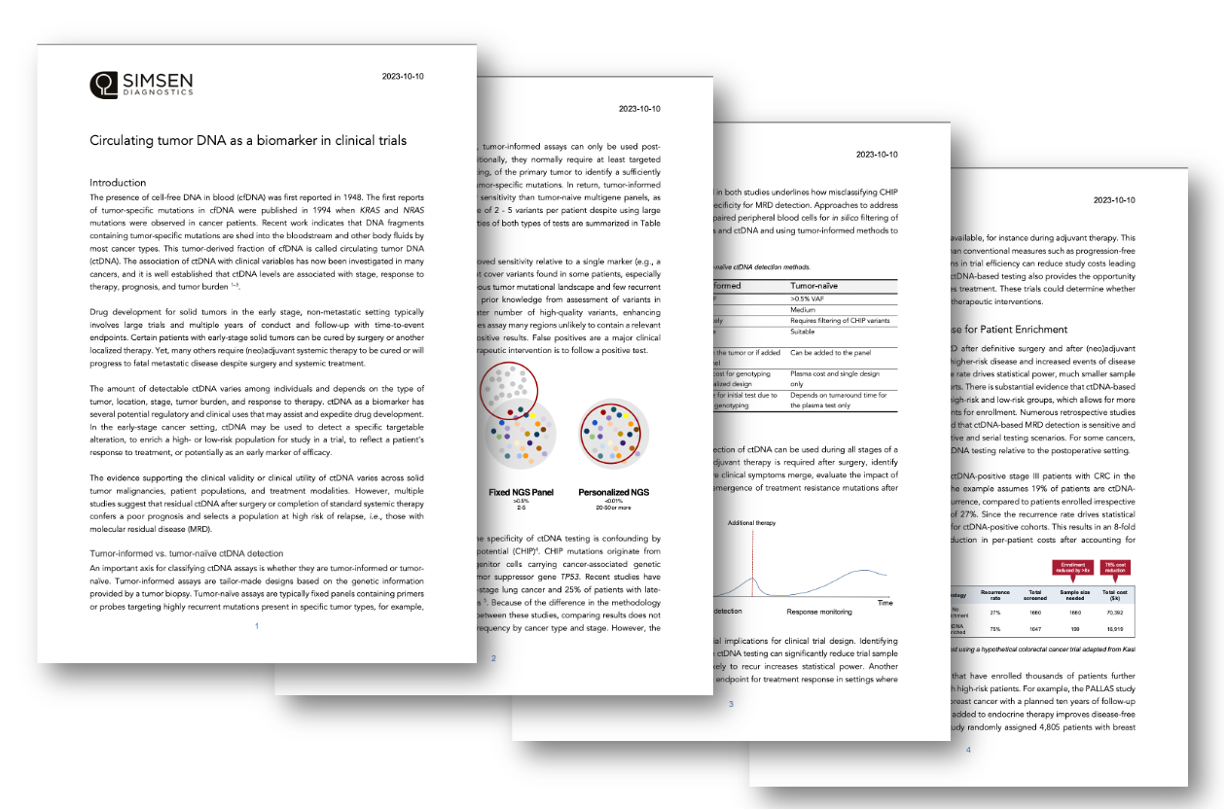Technology and Science
Given the uniqueness of each tumour, a uniform testing approach may not be sensitive enough to detect cancer. For that reason we developed Simsen® Personal, a customised ctDNA test for each patient, offering next level sensitivity and specificity for monitoring cancer.
Frequently Asked Questions
Circulating tumour DNA (ctDNA) refers to small fragments of DNA that come from dead tumour cells and are found in the bloodstream. These DNA fragments circulate within the bloodstream alongside DNA from healthy cells. The ctDNA contains distinct genetic mutations or changes that are unique to the tumour they originated from.
Because these tests are searching for specific mutations known to be present in a patient’s tumour, they can be more sensitive in detecting low levels of ctDNA. This can be particularly advantageous in early detection, minimal residual disease monitoring, or assessing response to therapy.
Our sensitivity is 0.001% VAF.

Whitepaper: Circulating tumor DNA as a biomarker in clinical trials
Reliable detection of MRD has substantial implications for clinical trial design. Identifying patients at high risk of recurrence through ctDNA testing can significantly reduce trial sample size, as enriching trials with patients likely to recur increases statistical power. Another potential role for ctDNA is as a surrogate endpoint for treatment response in settings where conventional response biomarkers are unavailable, for instance during adjuvant therapy. This could indicate treatment efficacy earlier than conventional measures such as progression-free (PFS) and overall survival (OS). These gains in trial efficiency can reduce study costs leading to expedited approval of new therapies. ctDNA-based testing also provides the opportunity to conduct trials where MRD status guides treatment. These trials could determine whether MRD-positive patients benefit from early therapeutic interventions.
